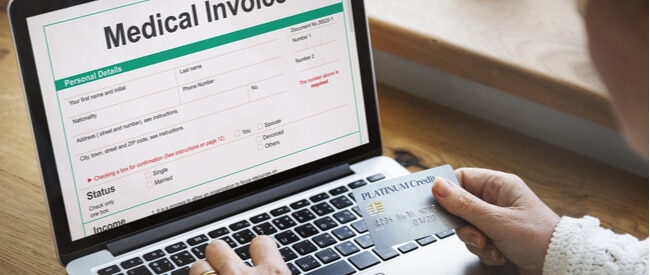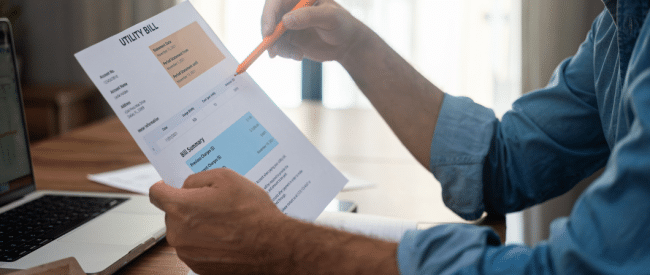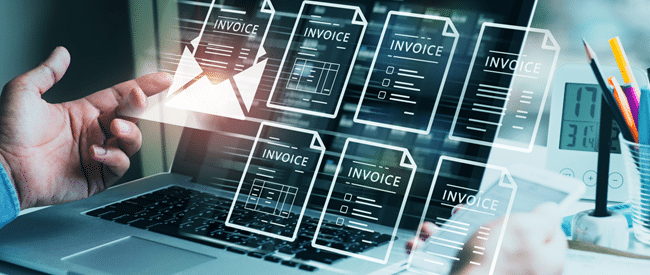Managing the entire cycle of patient billing and payments with a HIPAA-compliant integrated system is faster, easier and more effective. Just ask revenue cycle management leaders Sutherland Healthcare and Convergent Revenue Cycle Management.
Here are 5 prime advantages from seamlessly combining cloud-based customer communications management (CCM) software, print and mail services and an electronic bill presentment and payment (EBPP) system from a full-service technology partner:
- Increased cash flow and cost savings
Tightly linking omnichannel billing with online account management and payments improves operating results, including:
- Electronic payments post the next day compared to five to seven days when patients mail a check to a bank lockbox and the bank processes the payment.
- Convergent sees a 5% to 10% drop-off in call-center traffic when it launches an online payment portal.
- Converting patients to e-statements saves money: Electronic financial communications cost one-third less than paper statements.
- Adding online payment links in emailed statements encourages prompt payment.
- Unmatched agility and control
“The convenience of having it all on one platform, the robustness of the capabilities compared to other options and the speed in getting bills out” are key benefits to an integrated billing and payments system, said Paul Balcerzak, Sutherland’s vice president and global lead of provider services.
Using one platform to manage digital and print communications and multiple payment options, from mail to mobile, simplifies and automates the growing complexity of handling each patient’s preferences. It also makes delivering a consistent, coordinated response to business changes or new opportunities fast and easy.
“The flexibility to change content on a dime is amazing,” said Brian Smith, Convergent’s statement and letter manager. That’s true whether it’s notifying patients of new payment-relief options during the pandemic, making compliance updates or reworking patient statements to emphasize online self-service customer support. It’s equally true when customizing content for different formats and channels, such as emails and paper letters.
“Also, the ease of access is so important. I’m constantly jumping between clients, communication types and more, and I don’t have to spend the time and aggravation logging in and logging out of different systems,” Smith said.
- Improved data security
A seamless HIPAA and PCI compliant billing and payments system lowers potential security and privacy risks from sharing customer data with or transferring data between multiple vendors for print, email, text, payments and so on. “Security is critical, which has been a big driver in consolidating our communications, printing and payments with one proven partner,” said Sutherland’s Balcerzak. “Not having to coordinate between different vendors and reconcile accounts means there are many fewer opportunities for the process to break down.”
- Improved patient experience
Having all financial information and payment options in one digital location “is a huge benefit from a patient satisfaction standpoint,” said Shawn Richmond, Convergent’s vice president of operations. “It’s convenient, on their own time, and easy to use.”
Using the merged CCM and EBPP capabilities, Sutherland and Convergent customize “one-stop shop” digital portals for each provider that are mobile-optimized. Patients log on to view their statements, make a one-time payment, enroll in extended payment programs and set up recurring payments. Patients can choose to pay using credit and debit cards, bank accounts (ACH), PayPal, Amazon Pay and IVR/CSR (call center).
For one provider, Convergent is also producing a single consolidated bill after insurance that covers all treatment and provider charges for a specified time period—replacing a flurry of patient bills from different providers for one episode of care, such as treatment by a pediatrician, radiologist and physical therapist for an injured ankle.
- Accelerated digital adoption
While no one plans to eliminate paper statements or mailed checks any time soon, “100% of our provider clients want an online bill pay option,” said Convergent’s Richmond. So do patients. Since moving to the combined CCM and EBPP platform in 2016, about 30% of Sutherland’s payments are electronic.
Integration also makes it easy to cross-promote digital options. Paper statements can highlight payment portals even as they downplay call-center numbers. It’s also easy to spotlight e-billing through log in and other steps for the payment portals, capitalizing on the CCM integration to accept opt-ins and update and automate delivery choices.
Convergent has taken it a step further: When a patient first creates an online account at the providers’ payment portals, the default setting is now e-statements. Patients need to actively opt out of e-statements to receive paper statements.
Encouraging patient payments
Medical bills already have an uphill battle to get consumer attention and a share of household budgets compared to housing, food, utilities and credit cards.
- They arrive months after medical care.
- There are no standard prices for care.
- Patient amounts owed after insurance are almost always a surprise.
- Multiple bills are sent by different providers, such as the hospital and anesthesiologist, for the same illness or episode of care.
- They are a one-time expense versus part of regular monthly spending.
To break through, Sutherland and Convergent have found that integrating omnichannel billing communications and payments in a single solution is a winning strategy. It removes barriers to payment through improved provider and patient experience, personalization and performance.







